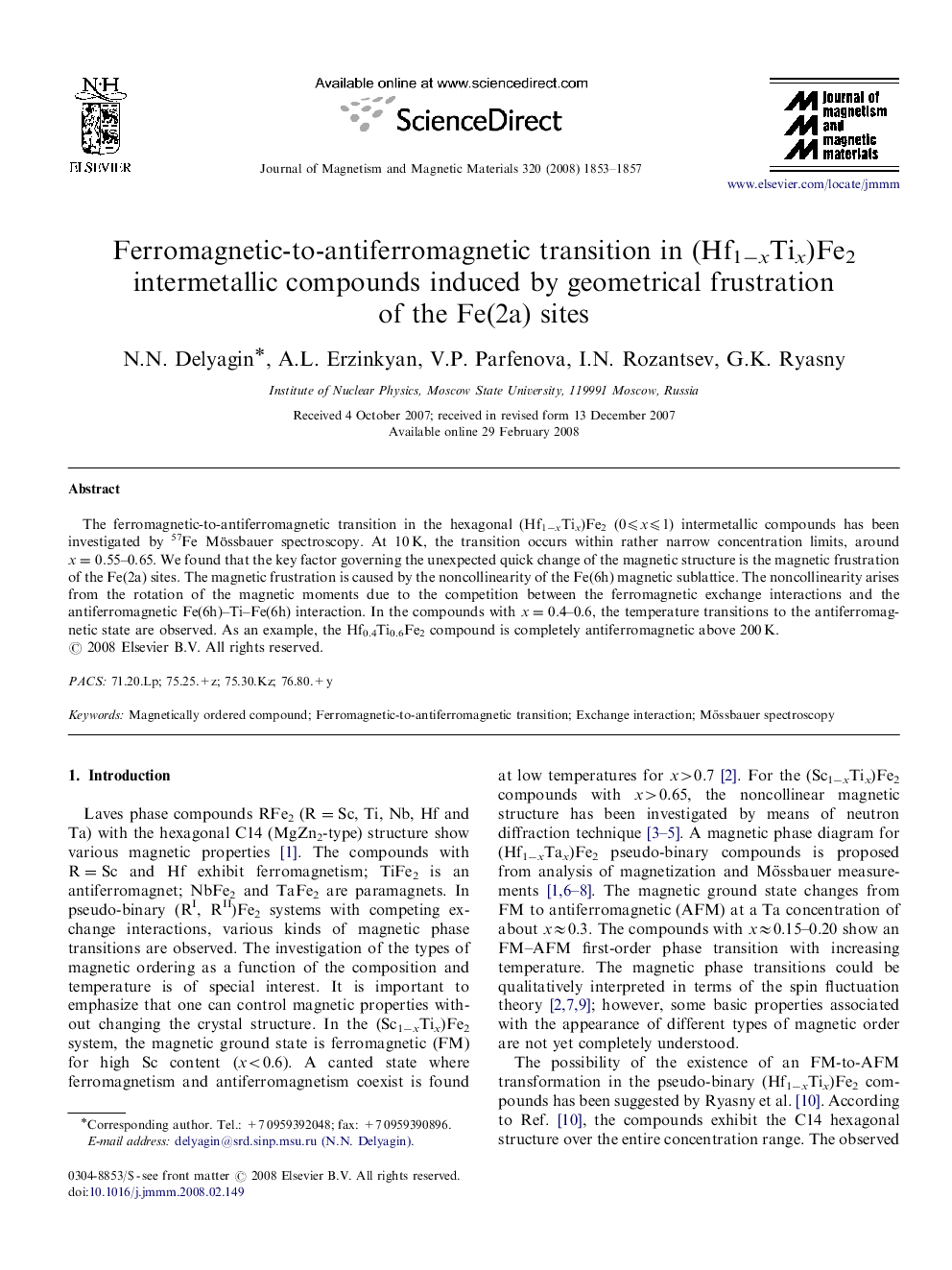| Article ID | Journal | Published Year | Pages | File Type |
|---|---|---|---|---|
| 1803457 | Journal of Magnetism and Magnetic Materials | 2008 | 5 Pages |
The ferromagnetic-to-antiferromagnetic transition in the hexagonal (Hf1−xTix)Fe2 (0⩽x⩽1) intermetallic compounds has been investigated by 57Fe Mössbauer spectroscopy. At 10 K, the transition occurs within rather narrow concentration limits, around x=0.55–0.65. We found that the key factor governing the unexpected quick change of the magnetic structure is the magnetic frustration of the Fe(2a) sites. The magnetic frustration is caused by the noncollinearity of the Fe(6h) magnetic sublattice. The noncollinearity arises from the rotation of the magnetic moments due to the competition between the ferromagnetic exchange interactions and the antiferromagnetic Fe(6h)–Ti–Fe(6h) interaction. In the compounds with x=0.4–0.6, the temperature transitions to the antiferromagnetic state are observed. As an example, the Hf0.4Ti0.6Fe2 compound is completely antiferromagnetic above 200 K.
